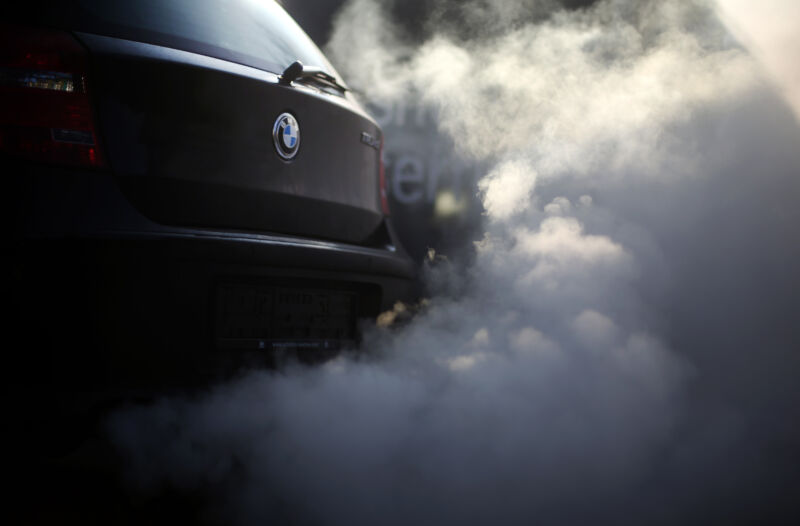
At the outset of the pandemic, when lockdowns were widespread, a remarkable phenomenon occurred. Places that had been saturated with pollution suddenly cleared. The sky over Los Angeles turned blue. Snow-capped mountain ranges that were normally obscured by pollution glistened on the horizon. The white marble of the Taj Mahal, which is normally wrapped in smog, shone brightly against an azure sky. Even in regions that aren’t typically considered polluted, the air just smelled fresher.
The reason, of course, is that hardly anyone was driving. Burning fossil fuels, whether under the hood of an automobile or in a home furnace or power plant, produces copious amounts of fine particulate pollution, also known as PM2.5—particulate matter smaller than 2.5 microns. For years, researchers didn’t understand the impact of these pollutants.
But as scientists have started digging, they have discovered that particulates have an outsize impact on our health. Previous research showed that PM2.5 from burning fossil fuels kills more than a million people a year, mostly in heavily polluted regions of Asia. But now, a new study from the Health Effects Institute shows that even in the US, where the air is comparatively clean, PM2.5 current Environmental Protection Agency guidelines may not be low enough to prevent unnecessary deaths.
Better—but still not great
Air quality in the US has greatly improved since the 1970s, yet researchers were curious to see if today’s relatively clean air still contained unhealthy amounts of pollution. The new study, led by Francesca Dominici at Harvard University, looked at 68.5 million older Americans who were exposed to ambient air that was cleaner than current EPA guidelines. The team determined PM2.5 exposure using satellite data along with land-use details to refine pollution estimates from roads, farms, and so on. The researchers found that deaths among older Americans, regardless of the cause, rose 6–8 percent for every additional 10 µg of PM2.5 per cubic meter of air throughout the year. That’s a relatively small amount; to put it in context, daily PM2.5 levels classified as “good” would have to increase by more than twice that number to trigger an air quality alert for sensitive groups and 14-times to trigger an alert for everyone else.
PM2.5 is particularly deadly because of its size. Our noses are pretty good at filtering out larger particles, but smaller ones can penetrate deep into our lungs and circulatory systems. In the lungs, the particles can inflame tissues, causing or exacerbating asthma, chronic bronchitis, emphysema, and other problems. In our circulatory system, PM2.5 can drive up heart rates and lead to heart attacks, strokes, and other cardiovascular problems. Fine particulate pollution is even associated with neurological problems, including Alzheimer’s and Parkinson’s diseases.
In recent years, the evidence of negative health effects from PM2.5 “has grown substantially,” Daniel Greenbaum, president of the Health Effects Institute, told Ars. Two major studies in the late 1980s and early 1990s were the first to suggest that eliminating visible soot wasn’t enough, he said, and added “that there are really effects even with those very fine particles.” Since then, more landmark studies have shown just how pervasive and pernicious PM2.5 pollution can be.
Subtle changes, big impacts
The EPA didn’t regulate PM2.5 specifically until 1997, when it set the standard at 15 µg/m3 over the course of a year. In 2012, it reduced the number to 12 µg/m3, and the standard is again up for review, as it is every five years.
The researchers found that if the standard were to be lowered slightly, from 12 to 10 µg/m3, it would save the lives of 143,000 Americans over the next decade.
The drive to electrification would go a long way to achieving that end. In the US, around 40 percent of PM2.5 pollution comes from burning fossil fuels, with the majority coming from oil and natural gas. Eliminating those sources could have positive health effects, too. A World Bank review of pollution studies suggests that PM2.5 from fossil fuel combustion—particularly coal, gasoline, and diesel—may pose the greatest risk to people’s health.
Not all particulate matter comes from fossil fuels, of course. Some comes from farming and ranching, where fields and pastures kick up dust, while other sources include wildfires, industrial solvents, and waste incineration. There is probably a floor on how low PM2.5 pollution can get, but the study suggests that even small reductions could have a major impact on people’s health.
“Figuring out how we go about dealing with these already very low levels of pollution and further reducing them is not going to be simple. The sources are going to be very dispersed over wide areas,” Greenbaum said. The new study’s results, he added, pose “an even more challenging question for air quality policy.”
https://arstechnica.com/?p=1828892

